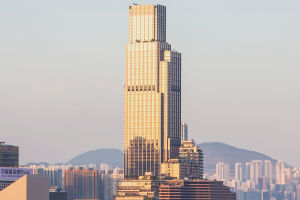A recent study conducted by the National Aeronautics and Space Administration (NASA) has unveiled a striking finding: Earth is greener today than it was two decades ago.
The research indicates a remarkable 5% increase in global greening, equivalent to an area the size of the Amazon rainforest. Notably, the efforts of China and India have played a significant role in driving this positive trend.
Expanding Green Foliage:
The study reveals that the Earth's land surface has experienced a substantial growth of green foliage, expanding by approximately 5.5 million square kilometers (2.1 million square miles).
This remarkable increase, which amounts to an area comparable to the Amazon rainforest, can be attributed to the collective efforts of various nations worldwide. Particularly, China and India have emerged as prominent contributors to this global greening phenomenon.
China's Role in Global Greening:
China's significant contribution of 42% to the global greening trends can be largely attributed to its forest conservation and expansion programs. These initiatives have been carefully designed to combat soil erosion, air pollution, and the adverse effects of climate change.
Moreover, the intensive cultivation of food crops has further bolstered China's greening efforts, accounting for an additional 32% of the observed increase. By implementing sustainable practices, China has made substantial strides in improving its environment.
India's Green Leap:
India, too, has made significant strides in greening its land. The study reports a 6.8% growth in green foliage in India, with agriculture playing a pivotal role. Around 82% of India's green leafy area expansion is attributed to agricultural land, while 4.4% is derived from forests.
The implementation of groundwater irrigation practices has been a crucial factor in driving food production and subsequently increasing vegetation. However, it is important to note that sustainable management of groundwater resources is necessary to ensure this positive trend continues in the future.
Factors Influencing Future Greening:
Predicting future greening trends is a complex task that hinges upon several global and local factors.
Human activities, including climate change and land use patterns, exert a substantial influence on the biosphere's response. While an increase in vegetation cover and productivity generally signifies global greening, the relationship between these factors is not universally consistent.
Nonetheless, the increase in green foliage observed worldwide is an encouraging sign of how our planet can respond positively to human efforts.
Understanding Vegetation:
The term "vegetation" encompasses all plant communities present in a given area. Earth's land surface features diverse plant communities, including forests, grasslands, scrub, desert meadows, swamps, and more.
These collectively constitute the vegetation of a region. Additionally, vegetation can be classified as either natural or artificial (cultivated).
Urban Vegetation:
Urban vegetation encompasses all naturally occurring and artificially cultivated plant types within cities. It encompasses the sum of vegetation found in parks, schools, temples, squares, courts, hospitals, streets, farmlands, and vacant lots.
Urban vegetation includes forests, shrubs, hedges, flower beds, grasses, trees, and crops. It serves as an integral part of urban ecosystems, providing numerous benefits such as improved air quality, temperature regulation, and aesthetic appeal.
Types of Urban Vegetation:
Within urban areas, different forms of vegetation can be distinguished. Agricultural field crops refer to crops grown within urban spaces, including both field crops and orchards. Plantation forests are artificially created plant communities predominantly composed of trees within urban boundaries.
Artificial scrub refers to shrub-based vegetation intentionally constructed within cities. Lastly, artificial grasslands comprise herbaceous plant-dominated green spaces established within urban areas.


